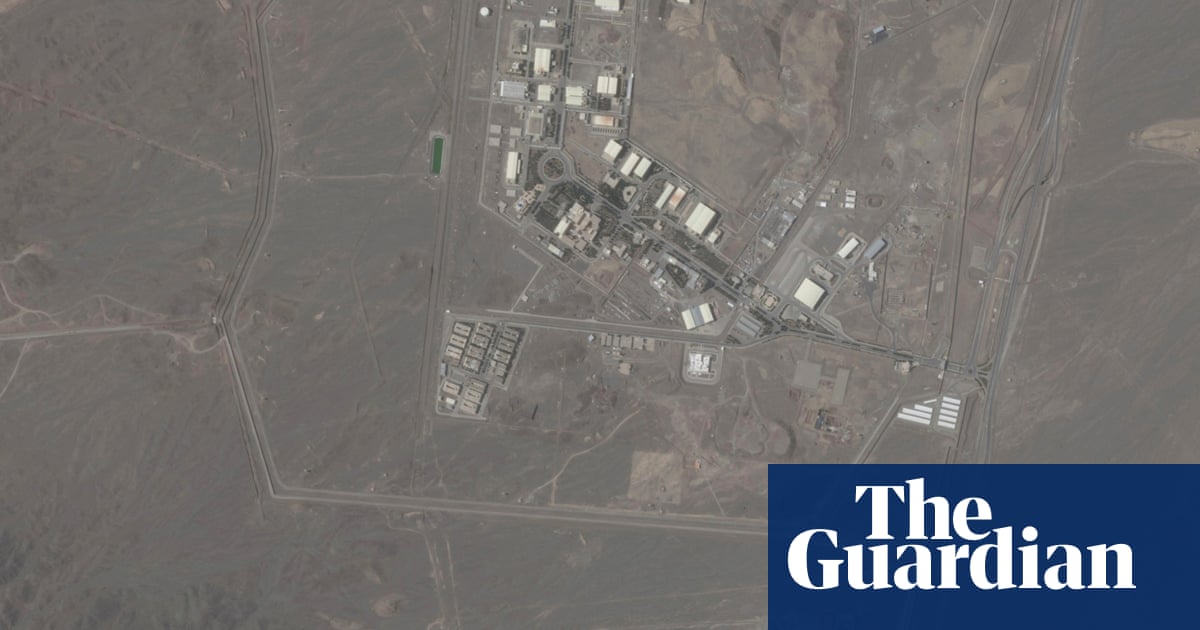The withdrawal of non-essential US personnel from parts of the Middle East and the anonymously sourced US reports in the past 24 hours thatIsraelis on the brink of an all-out attack on Iran are all deeply alarming, but they are also familiar.
The Israeli government has approached the same precipice, of a war to destroy Tehran’s nuclear programme, several times in the past two decades, going as far as honing detailed plans and conducting practice air sorties.
On each occasion, there have been briefings in Washington that Israel means business and could act on its own. Each time, however, Israel has held back in the absence of US support.
“This pattern of behavior repeats like a script kept in a drawer, dusted off and updated,” Yossi Melman, a veteran Israeli military and intelligence analyst, wrote inHaaretz newspaper this month.
“Israel won’t attack Iran’s nuclear sites,” Melman concluded. “Without American assistance in both defence and offence, such a strike would be ineffective and send millions of Israelis into the shelters for long stints.”
In going it alone, the prime minister,Benjamin Netanyahu, risks a ballistic missile backlash on Israel’s cities, with no guarantee he can deal an enduring blow to Iran’s deeply buried nuclear facilities, such as the enrichment plants in Natanz and Fordow, and the third site which Iran says is now ready to receive equipment.
Unlike the incipient Iraqi and Syrian nuclear programmes, which Israel struck with decisive effect in 1981 and 2007, Iran’s nuclear infrastructure is highly advanced, very well protected, spread over many sites and, by now, almost entirely indigenous.
Destroying enrichment chambers deep underground or dug into the side of mountains would require intricate knowledge of the defences and very big bombs, such as the 30,000lb (13,600kg) Massive Ordnance Penetrator, which the US has and the Israeli air force does not.
Even with such a bomb, a study in March by theRoyal United Services Institutesuggested it “would likely require multiple impacts at the same aiming point” to have a good chance of penetrating the underground facility at Natanz and the mountain facility at Fordow, both estimated to be 80-100 metres deep.
“Strikes with lesser penetrating weapons could still collapse entry and exit tunnels given good intelligence about their exact layout and location,” the study said, but that would be a more temporary setback for the Iranians.
To reach Iran’s multiple far-flung facilities and come back in successive waves to bomb buried targets would be an enormous endeavour. Any damage could be repaired because Iran has enough homegrown expertise in every stage of the nuclear cycle and, theoretically, in weaponisation. This deep reservoir of knowhow will be all but impossible to eradicate, though Israel has tried in the past with an assassination campaign against Iranian scientists.
To wound Iran but fall short of killing off its nuclear programme could be a fatal own-goal. The Iranians could rebuild bigger and deeper than before or, at worse, the supreme leader could order a dash to construct a usable warhead, the fatal last step that Iran has avoided until now.
Meanwhile, as Iran has made clear in the past few days, it would fire back with all its might. With the help of the US and other allies, Israel weathered drone and missile attacks in April and October last year with little damage, but those were calibrated Iranian responses to earlier, limited, Israeli actions. Tehran did not go all out and did not aim at Israeli cities. Netanyahu could not rule out a mass casualty Iranian counter-strike.
For the time being, the Israeli moves are more likely to be designed to create the most favourable conditions for a sixth round of US-Iran talks in Oman on Sunday. However, as diplomatic off-ramps go, this seems particularly narrow and badly thought out.
Donald Trump and his favoured troubleshooter, Steve Witkoff, have so far locked themselves in a maximalist negotiating position, stipulating that Iran must give up all uranium enrichment, a condition Tehran is highly unlikely to accept no matter what compensation they are offered. If Trump thought the regime would give up something that has become an embodiment of its sovereignty, it was almost certainly a miscalculation.
If the Oman talks collapse, the credibility of Trump’s threats will be in question and he will come under redoubled Israeli pressure to facilitate an attack. Netanyahu and his top security officials, who are going to brief Witkoff in person before Sunday’s talks, will make the argument that there is a narrow and closing window for the attacks.
Israel badly damaged Iran’s air defences in its retaliation for the October missile attack and they are still being rebuilt.
If there is one thread of consistency in Trump’s otherwise chaotic foreign policy approach, however, it is his deep distaste for war. He will know that US bases, embassies, ships and planes would become targets if the US takes part in strikes. Iran could also block the strait of Hormuz, the bottleneck in the oil supply route from the Gulf.
The consequent oil price increase is likely to dwarf the inflationary surge that hobbled the Biden administration. Peace, diplomacy and low inflation are central to Trump’s self-justification before next year’s congressional elections.
There are compromises available. Scholars at Princeton University have recently refined a longstanding proposal for aregional enrichment consortiumin the Gulf which would address proliferation concerns.
The historic finding by the International Atomic Energy Agency board that Iran is in violation of its legal obligations offers a return to more cohesive international sanctions as an alternative to war, to give more time for diplomacy. Whether these last-ditch options are grasped is ultimately down to Trump.
